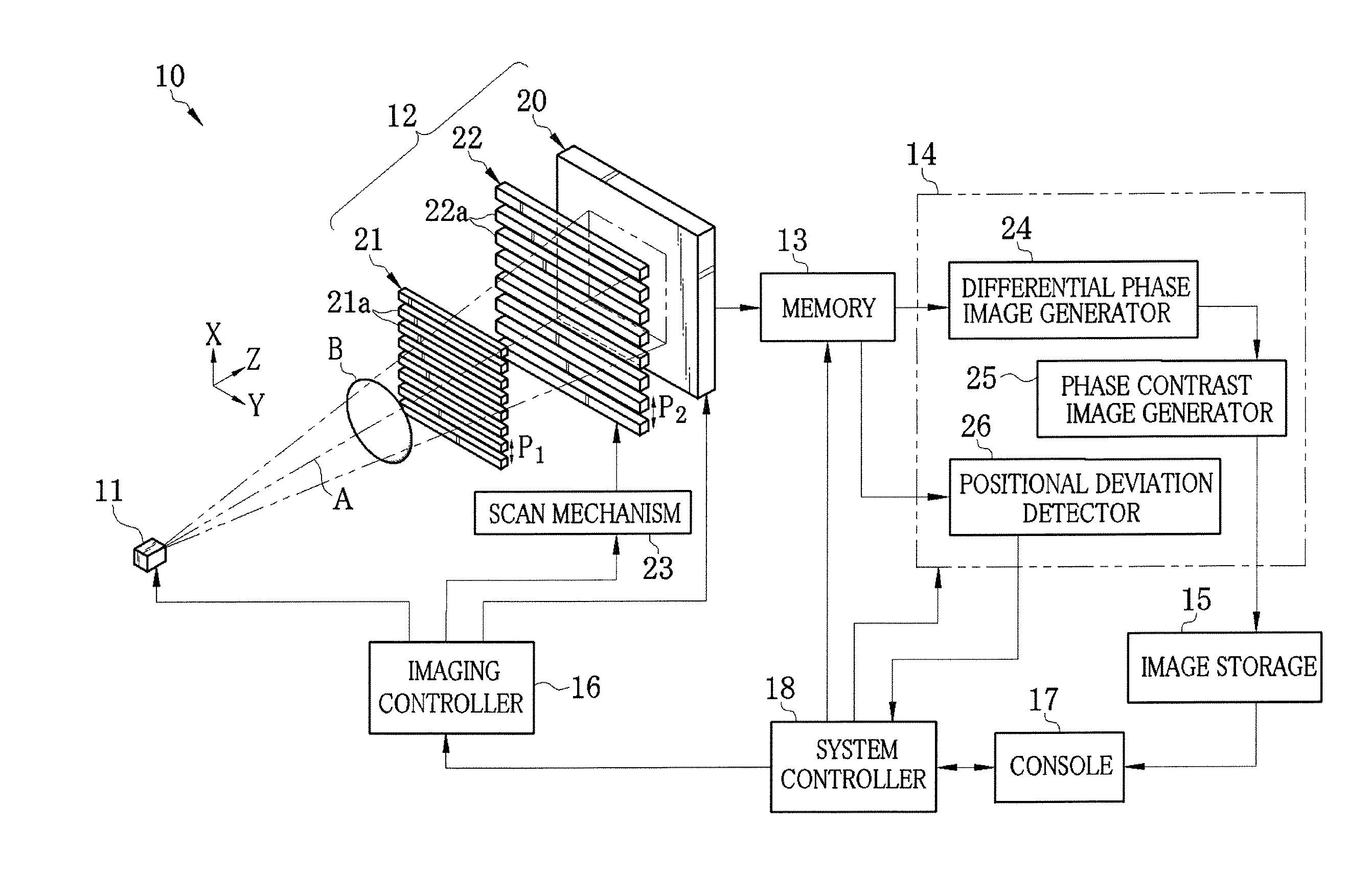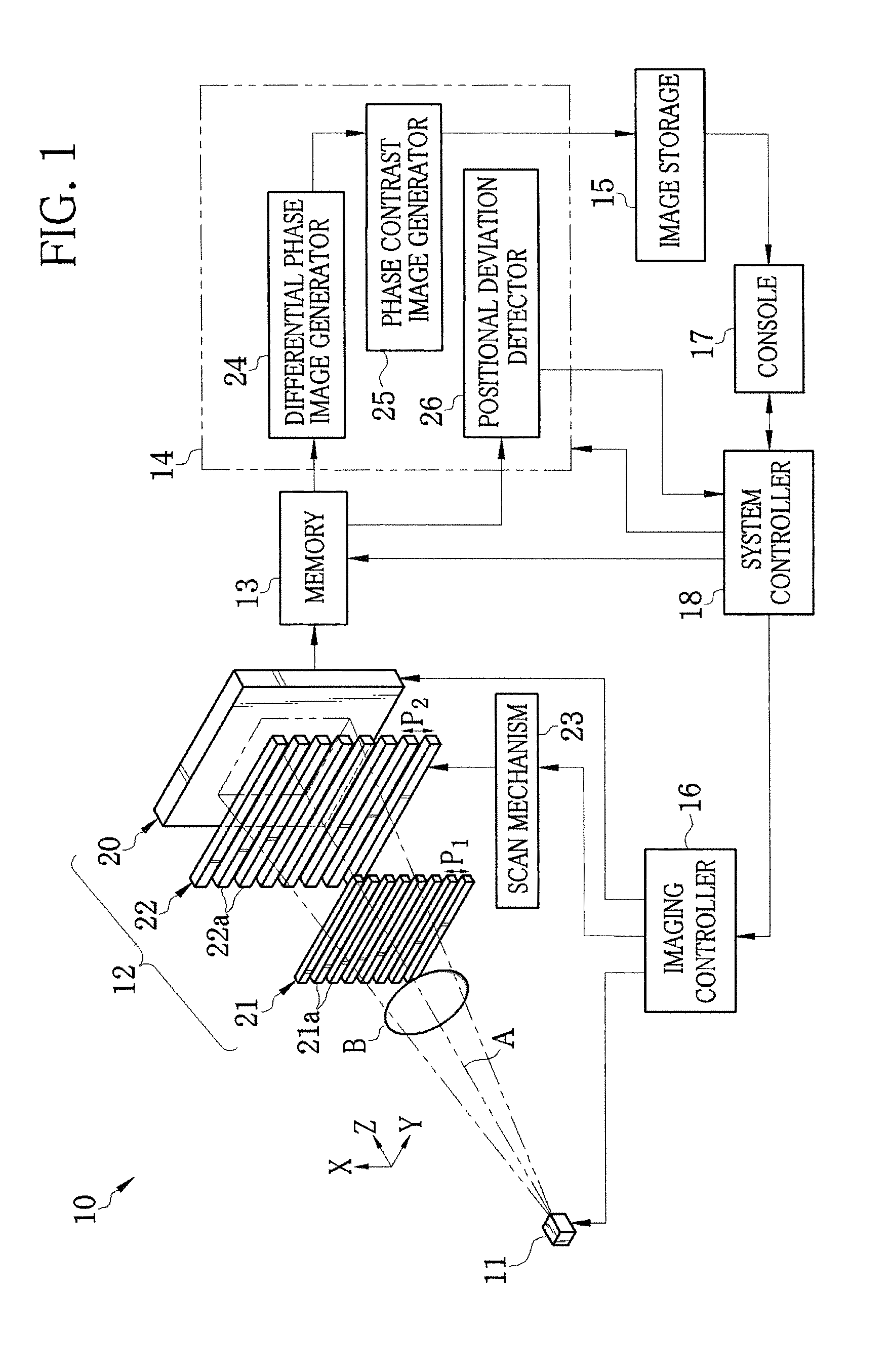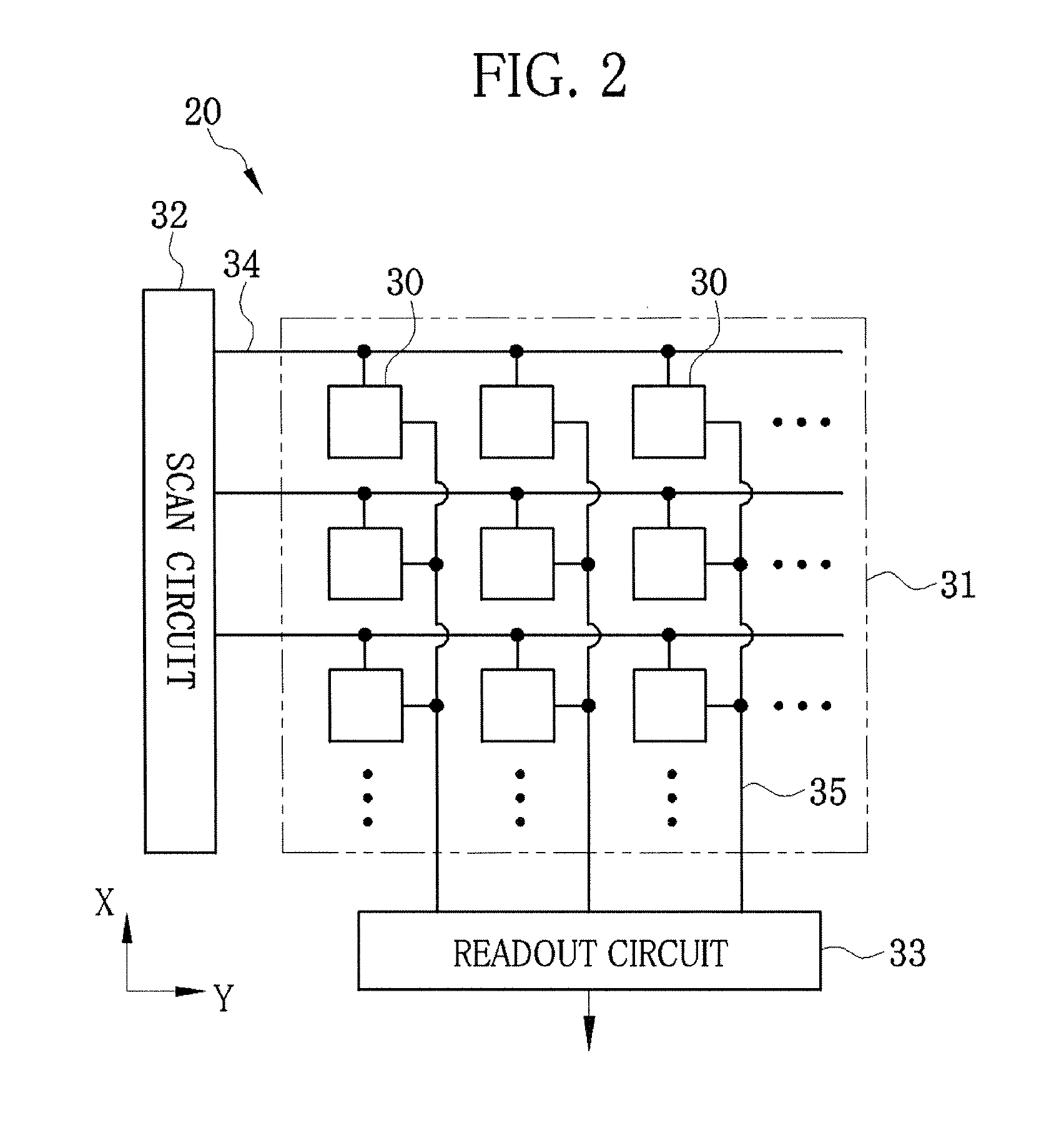Radiation imaging system and method for detecting positional deviation
a radiation imaging and positional deviation technology, applied in the field of radiation imaging systems, can solve the problems of complex and expensive x-ray imaging systems, inability to have sufficient contrast, and inability to detect the positional deviation easily and precisely
- Summary
- Abstract
- Description
- Claims
- Application Information
AI Technical Summary
Benefits of technology
Problems solved by technology
Method used
Image
Examples
first embodiment
[0036]As shown in FIG. 1, an X-ray imaging system 10 according to a first embodiment is constituted of an X-ray source 11 for emitting X-rays, an imaging unit 12, a memory 13, an image processor 14, an image storage 15, an imaging controller 16 for controlling the X-ray source 11 and the imaging unit 12, a console 17 including an operation unit and a monitor, and a system controller 18 for carrying out control of the entire X-ray imaging system 10 based on an operation signal inputted from the console 17. The imaging unit 12 is disposed so as to face the X-ray source 11, and detects the X-rays that have been emitted from the X-ray source 11 and passed through an object B, to produce image data. The memory 13 stores the image data outputted from the imaging unit 12. The image processor 14 produces a phase contrast image from plural frames of image data stored on the memory 13. The image storage 15 stores the phase contrast image produced by the image processor 14.
[0037]The X-ray sour...
second embodiment
[0099]In the above first embodiment, if the length from the X-ray source 11 to the FPD 20 is elongated, the G1 image is blurred due to a size (0.1 mm to 1 mm, in general) of the X-ray focus 11a. The blur causes degradation in the image quality of the phase contrast image. For this reason, a multi-slit (source grating) 50 may be disposed just behind the X-ray focus 11a, as shown in FIG. 10.
[0100]The multi-slit 50 is an absorption grating that is similar to the first and second absorption gratings 21 and 22. In the multi-slit 50, a plurality of X-ray shield members 50a extending in the Y direction are periodically arranged in the X direction at a predetermined grating pitch P0. This multi-slit 50 partly blocks the X-rays emitted from the X-ray source 11 to reduce the effective focus size in the X direction, and forms a number of point sources (distributed light sources) in the X direction, in order to prevent the blur of the G1 image.
[0101]The grating pitch P0 of the multi-slit 50 has...
third embodiment
[0106]In the above first and second embodiments, the first and second absorption gratings 21 and 22 linearly project the X-rays that have passed through the slits. However, the present invention is applicable to a radiation imaging apparatus (refer to International Publication No. WO2004 / 058070) in which the slits diffract the X-rays to produce the so-called Talbot effect. In this case, however, the length L2 between the first and second absorption gratings 21 and 22 has to be set at the Talbot distance. Also, in this case, a phase grating (phase diffraction grating) is usable instead of the first absorption grating 21. This phase grating projects to the second absorption grating 22 the fringe image (self image) produced by the Talbot effect.
[0107]The difference between the phase grating and the absorption grating is only the thickness of an X-ray absorptive material (X-ray shield members). The X-ray shield members of the absorption grating have a thickness of approximately 30 μm or...
PUM
 Login to View More
Login to View More Abstract
Description
Claims
Application Information
 Login to View More
Login to View More - R&D
- Intellectual Property
- Life Sciences
- Materials
- Tech Scout
- Unparalleled Data Quality
- Higher Quality Content
- 60% Fewer Hallucinations
Browse by: Latest US Patents, China's latest patents, Technical Efficacy Thesaurus, Application Domain, Technology Topic, Popular Technical Reports.
© 2025 PatSnap. All rights reserved.Legal|Privacy policy|Modern Slavery Act Transparency Statement|Sitemap|About US| Contact US: help@patsnap.com



